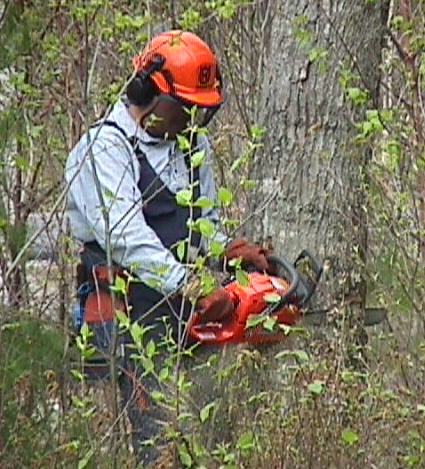
Tim's Tips
Open Face Notch & Sight Line
The function of the notch is to allow the tree to fall without breaking the hinge prematurely. Typically, most notches today are less than 45 degrees. These small notches close up before the tree has fallen even half-way to the ground. When this happens, stress is put on the hinge causing fiber pull, splitting of the butt log or barber-chairing.
The proper undercut should be an open face at least 70 to 90 degrees. The best way to form this opening is to make the top cut first. The logger saws in a downward and slightly inward direction until the width of the notch is approximately 80% of the diameter of the tree. The operator then removes the chainsaw and finishes the notch by making the second cut in a slightly upward direction.
The advantage of making the top cut first are that the operator can easily establish hinge width and can also look into the top cut and actually see when the second cut meets. With practice, a chainsaw operator should be able to have both cuts meet exactly on the first try. A by-pass of no more than 3/8 inch is acceptable.
Positioning the Notch and Direction of Fall
Many saws have a built-in sight line which can be used to establish falling direction of a tree. The line is usually a raised ridge of plastic or a decal. In the absence of a sight line, any seam on the casing which is perpendicular to the bar is acceptable.
The logger stands behind the saw while leaning against the tree and sights over the saw. When the target is in line with the sight line, the logger begins the first downward cut of the notch. The resulting face notch will determine the falling direction of the tree (see next page).
70-90 degree angle

